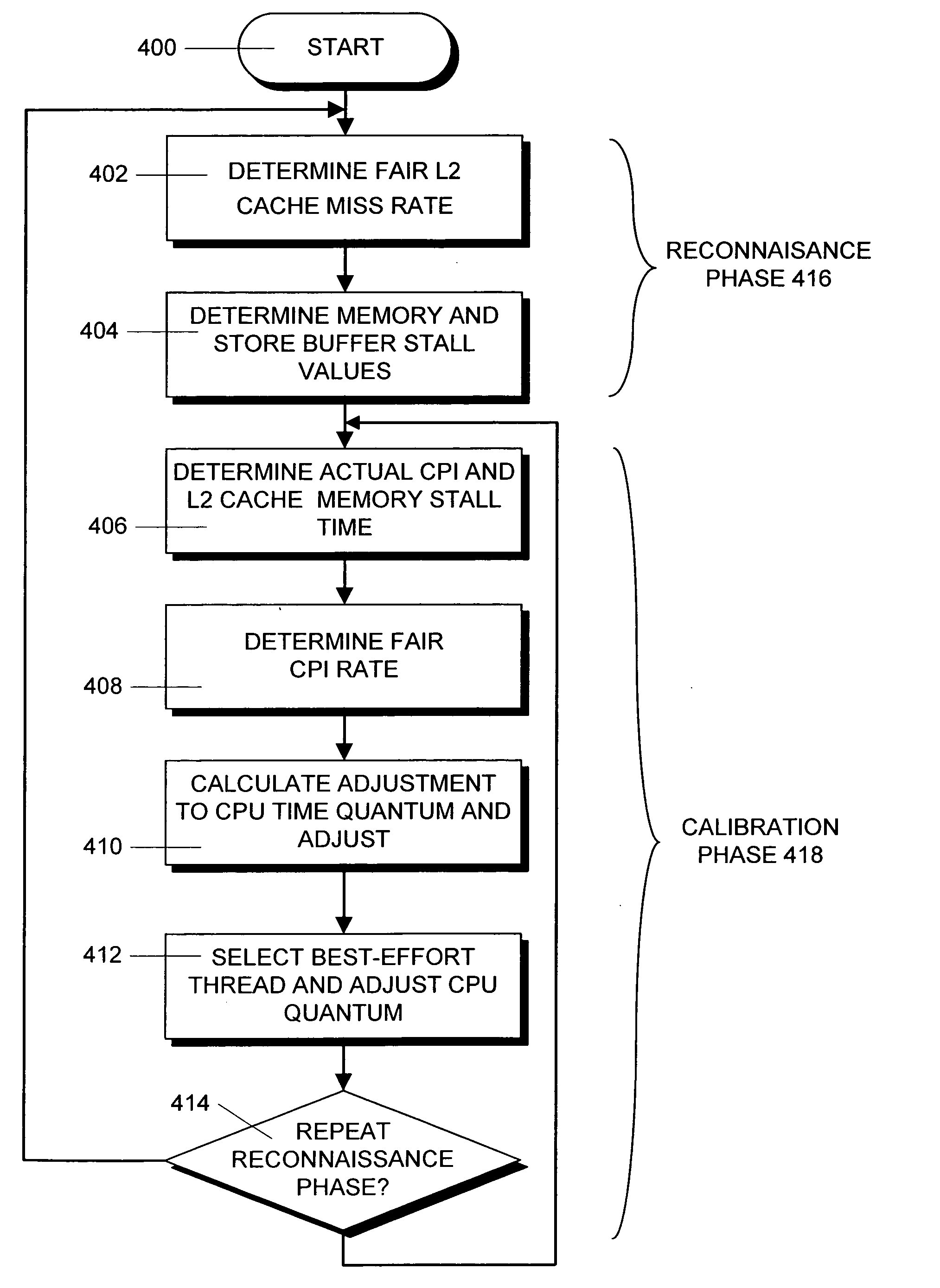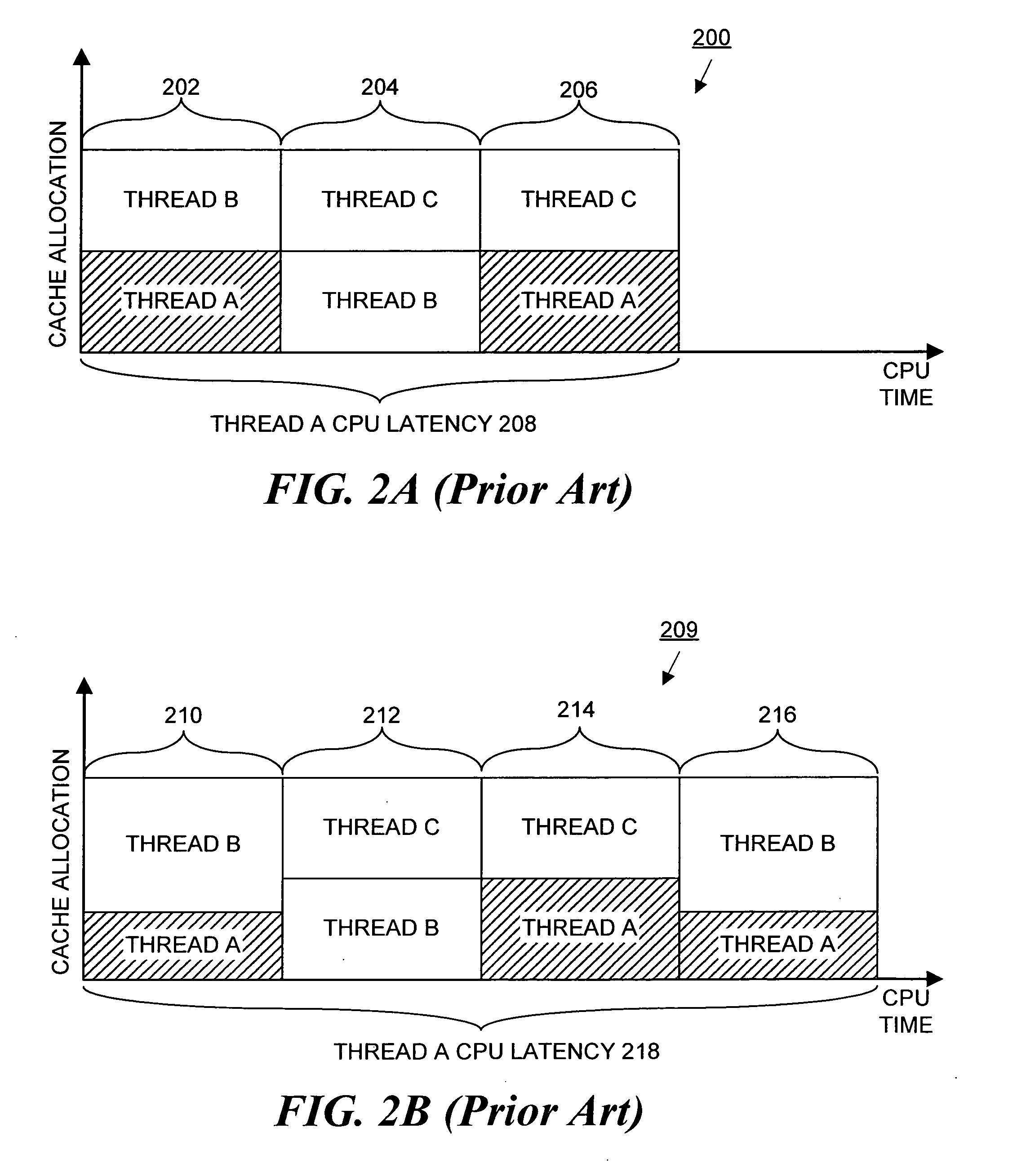Method and apparatus for achieving fair cache sharing on multi-threaded chip multiprocessors
a multi-threaded chip and multi-processor technology, applied in memory adressing/allocation/relocation, multi-programming arrangements, instruments, etc., can solve the problems of affecting the rate at which the thread retires instructions, the rate of unfair cache sharing, and the cache miss rate. to achieve the effect of fair cache miss ra
- Summary
- Abstract
- Description
- Claims
- Application Information
AI Technical Summary
Benefits of technology
Problems solved by technology
Method used
Image
Examples
Embodiment Construction
[0028]Like conventional operating system schedulers, a scheduler performing the inventive method runs periodically (for example on every system clock “tick”) for each running thread. However, the scheduler also performs cache-fair specific processing as described in detail below. FIG. 3 illustrates how the inventive cache-fair method eliminates dependency of the performance of one thread on another thread. The figure illustrates the situation shown in FIG. 2B when the operating system scheduler 136 performs the cache-fair method. As illustrated in FIG. 2B, FIG. 3 shows a graph 300 depicting cache memory allocation along the vertical axis and CPU time along the horizontal axis. The same three threads (A though C) as shown in FIG. 2B are running on the dual-core processor and three CPU time slots 302-306 are illustrated. As illustrated, thread B requires more L2 cache memory than thread A as shown by the increased height of its corresponding box. However, the inventive method gives th...
PUM
 Login to View More
Login to View More Abstract
Description
Claims
Application Information
 Login to View More
Login to View More - R&D
- Intellectual Property
- Life Sciences
- Materials
- Tech Scout
- Unparalleled Data Quality
- Higher Quality Content
- 60% Fewer Hallucinations
Browse by: Latest US Patents, China's latest patents, Technical Efficacy Thesaurus, Application Domain, Technology Topic, Popular Technical Reports.
© 2025 PatSnap. All rights reserved.Legal|Privacy policy|Modern Slavery Act Transparency Statement|Sitemap|About US| Contact US: help@patsnap.com



